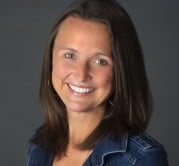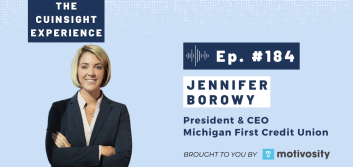Celebrating the Nobel Prize and challenging what lies ahead

I love October. Especially in the Midwest, the fall blue skies shine boldly and hint at the chill in the air as summer fades. Joy emanates with the celebration of fall festivals, the creativity of Halloween costume planning, and the building anticipation of Nobel Prizes being awarded. Every year, I observe in awe the achievements of humans who defy the boundaries of our collective understanding in physics, chemistry, physiology or medicine, literature, peace, and economic sciences.
This year, Claudia Goldin, the Henry Lee Professor of Economics at Harvard University, was announced as the Nobel Prize winner in economic sciences. Goldin’s work spans a variety of topics, including women’s labor force participation and economic history, emphasizing the gender pay gap. As I visited the nobelprize.org site’s announcement of this year’s Nobel Prize laureate, the answers to a poll question stood boldly.
Of 25,000 respondents, 43% affirm that it is “fair that women earn less than men in the same occupation.” As I consider this response, I leaned into some research that may help identify areas where credit union leaders can usher the industry, standing together with women as we shape an even brighter future.
Through my 25-year career in credit unions, I have developed a leadership philosophy centered on what I identify as Cushions & Wings. Cushions provide a supportive space to grow, generosity of spirit, awareness, and connection, celebrating successes, a soft landing in challenging moments, lending an ear when necessary, and providing empathy and grace. Wings complement cushions. They challenge people to rise to new heights, empower them to find their voices, encourage them to take chances and provide a platform to dream the impossible. Although an organizational culture can have one without the other, combining the two creates stronger outcomes and encourages human growth.
As credit unions play a leading role as an industry-shaping a future with women, three key focus areas might chart our course.
Hiring & career launch
In her book Understanding the Gender Gap: An Economic History of American Women, Goldin argues that the gender pay gap could not be attributed solely to gender discrimination. Underlying structural factors deeply impact the gap, including misconceptions of women in the workplace, having historically participated in the workforce less than men, with lower salaries, in a more precarious way, in a smaller number of sectors, and with less probability of promotion, which persists today.
Goldin’s work also addresses the role labor distribution between women and men (both professionally and personally) has played in widening the fissure. She co-authored Dynamics of the Gender Gap for Young Professionals in the Financial and Corporate Sectors, a study on post-graduate MBAs salary trajectories, where initial salaries between genders were equivalent. Still, over time and as their careers progressed, the distance grew dramatically. Her study identifies factors contributing to the gap, such as career interruptions and perceived preferences for flexibility, which help explain the widening gender gap for female MBAs compared to male MBAs. The fact that women’s choices have often been, and remain, limited by responsibility for the home and family is at the heart of her analyses.
Actions credit unions might take include:
- Wings: We have much progress to celebrate within credit unions. Many organizations have done significant work addressing fair and transparent salary grades and creating initial offers equitable across people’s experiences regardless of other factors.
- Cushions: There may be ways to explore integrating mothers back into the workplace, including providing exposure and experience in larger, more strategic projects. How might this elevate our 2024 execution and advance the culture of our credit unions?
Career development
Opportunities remain surrounding the compounding factors that impact women in the workplace. According to a report prepared for the U.S. Department of Labor’s Women’s Bureau by the Urban Institute, “Lifetime earnings lost because of caregiving average $237,000, 15 percent of what we project mothers would earn, on average, if they did not provide any family care.” Women with children and women who experienced a marital disruption are more likely to demonstrate signs of financial distress. The monetary impact is only part of the story, as less flexibility also impacts the ability to attend conferences requiring travel and after-hours business/social events where the kind of connections furthering careers are made.
While working at Filene, I had the pleasure of meeting Annamaria Lusardi, Senior Fellow at the Stanford Institute for Economic Policy Research, who, in her research “Financial Well-Being of the Millennial Generation: An In-Depth Analysis of Its Drivers and Implications,” identifies that financial well-being for women is more likely to be associated with family characteristics than it is for men. Having financially dependent children is related to lower financial well-being for women but not men.
- Wings: The impact of seeing someone in leadership roles that match your career aspirations and goals while facing challenges that resemble your reality is affirming. The many women leading credit unions inspire me to achieve new heights. As leaders, we owe this to the women starting their careers. This is why it is critical to our culture strategy at Community Financial to offer various platforms to connect with leaders in both formal and informal settings, always structured to create an environment where connections are strengthened, and we can learn from one another. We invest in various opportunities for people at all levels of the organization to participate in internal events where industry experts join us to inspire bright futures and help us dream boldly.
- Cushions: A silver lining of the pandemic has been the broad implementation of flexible work that has opened the doors for excellent talent to (re)join the workforce. And yet, some of that talent remains untapped. In its 2021 “Women, Work, and Family During COVID-19: Findings from the KFF Women’s Health Survey,” The Kaiser Family Foundation’s authors highlight that in addition to juggling increased home and work responsibilities, many women during the pandemic left the workforce as the family caregiving responsibilities largely fell on women. The labor force participation rate for women is 12.2 percentage points lower than men in their prime age (defined by the Department of Labor as 25-54 years old) at the end of September 2023. Flexible work matters deeply. What types of unique work arrangements might we consider as credit union leaders that allow us to attract and retain new talent while providing flexibility to balance the competing demands women face?
Promotions & graduations
Professor Sekou Bermiss has demonstrated the Alumni Effects on Talent Attraction through his research. His compelling argument mirrors my philosophy of Cushions & Wings. We celebrate those individuals who, through their hustle & grind, have left a valuable legacy within our organizations as they embark on new life and career phases. In return, seeing them achieve their impossible provides an opportunity for those looking from the outside to want to be part of an organization that celebrates individual achievements, including their graduation.
- Wings: When a rockstar teammate reaches the point of graduation, how do you celebrate that individual, so it inspires your internal talent? How do you celebrate it externally, so your organization becomes known for positively playing a role in top talent’s professional development? What steps might you take in 2024 to weave this into the fabric of your human capital practices?
- Cushions: We also have an opportunity to map career opportunities within our organizations. Frequently, the more customary path to growth within financial institutions limits the possibilities that people see. At Community Financial Credit Union, we celebrate the journeys through our organization. A great recent example is our chief people officer, Cathy Meyers. Her 40-year career with us started in a student-run credit union and has traversed the branches, technology, and project management, and is now shaping the future of work leading our people strategy.
The wings we can create for women within our industry can become a hallmark of our legacy. Each of us can take a step toward this today, this week, this month, in 2024, and well beyond. We have a storied history of reaching firsts on behalf of Americans. Let’s become the very best place for women to work as we walk with human beings toward their impossible dreams. What might we accomplish by next October, friends?





